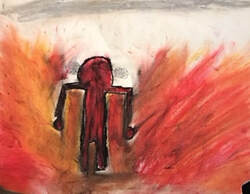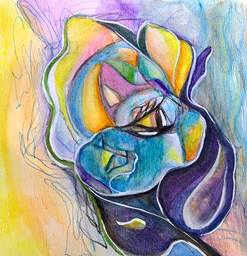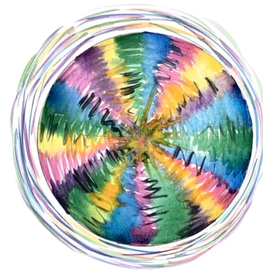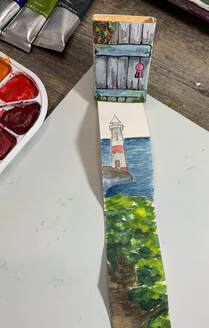Art Therapy

People often represent their world through images and symbols starting at a very early age. The goal of art therapy is to help foster a safe and non-judgmental environment that elicits creative self-expression and the promotion of positive emotional health and well-being. Using the creative arts in my practice helps to empower others, focuses on strengths, and helps others grow as new insights are constantly being made through the art making process. I strive to create a positive and enlightening experience for all my clients. The creative arts helps to improve self-esteem and self-confidence, reinforce learning, develop social skills (group activities), express feelings, gain insight, emphasize group cohesion and cooperation, and elicit a sense of belonging. Another advantage of the creative arts is the brief/time-limited or solution focused effectiveness of the techniques.
ARTWORK:
Title: Midunderstood, May 2018
Artist: Danielle
ARTWORK:
Title: Midunderstood, May 2018
Artist: Danielle
Benefits of Art Therapy
Search for BelongingThe feeling of belonging is central to the therapy process. Group art theory provides a bridge for creative interaction that supports cooperation, respect, and belonging. Clients explore how they see themselves, others, and the world around them through in a safe, non-judgmental environment. Relationships are central to one’s mental health and well-being. Creating art together in a group setting helps to foster personal meaning, healing, growth, and change. Change happens in the context of:
|
Search for MeaningArt making has been used for thousands of years to help provide a meaningful connectedness with our being and our environment. From the discovery of ancient cave paintings to modern day graffiti, images and symbols have been used to help people interpret their world. By creating and processing artwork, people have an opportunity to verbalize and interpret their creations and discover for oneself the meaning of the images he/she has created. We use these symbols and images to help interpret our environment and give meaning to life events.
Children and Adolescents |
|
|
Navigating through adolescence isn’t easy, especially when there are added barriers and environmental factors that may hinder the process. Art therapy addresses the emotional, social, and developmental needs of children and adolescents. Self expression through art can help with the emotional health, well-being, and growth of the child and emerging adolescent. It also provides a sense of accomplishment and connection to others.
Art therapy can assist children and adolescents to express freely their feelings, fantasies, memories, thoughts, and dreams through pictorial images, allowing them to explore their inner experiences through visual form. These images provide a bridge to mutual understanding, empathy, and sensitivity to the presenting problem. The act of processing these images with a trained art therapist can be therapeutic and cathartic. |





